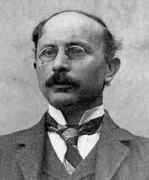Person: Pieri, Mario

Mario Pieri was an Italian mathematician who worked in projective geometry and the foundations of geometry.
Mathematical Profile (Excerpt):
- Mario attended elementary school in Lucca from 1866 to 1872 and there learnt to play the piano.
- In 1876 Mario entered the Royal Technical Institute in Bologna.
- Mario studied Italian, French, German, social studies and mathematics throughout his four-year course, taking courses in physics, chemistry and natural history in his final two years.
- His physics teacher was Augusto Righi, a young man who went on to have a fine research career in physics, and Righi quickly saw the great potential in his student Mario.
- His talents for mathematics were quickly spotted by Salvatore Pincherle, who took up the chair of mathematics at Bologna in 1881, when he examined Pieri in June of that year.
- At Pisa, Pieri had some distinguish mathematicians as his lecturers both at the Scuola Normale Superiore and at the University of Pisa (he attended courses at both institutions).
- Pieri's thesis, On the Singularities of the Jacobian of Four, of Three, of Two Surfaces, which supervised by Bianchi, was submitted to the University of Pisa in 1884.
- After teaching for a year in Pisa, Pieri won the competition for a professorship at the Royal Military Academy in Turin where he became professor of projective and descriptive geometry in November 1886.
- Soon, D'Ovidio presented Pieri's 1889 paper 'On Triple Tangents of Certain Surfaces of Sixth Order' to the Royal Academy of Sciences of Turin, the first of fourteen that Pieri would publish in its journals.
- In 1891 Pieri received his 'libero docente', which is similar to the habilitation and gives the right to lecture in universities, from the University of Turin.
- In 1891 he entered the competition for the chair of analytic and projective geometry at the University of Rome which was won by Guido Castelnuovo (Pieri came third equal).
- Two years later he entered the competition for the chair of projective geometry at the University of Naples (Domenico Montesano won with Pieri fourth equal), and the competition for the chair of projective and descriptive geometry at the University of Turin (Luigi Berzolari won with Pieri second equal).
- Pincherle hoped that he could appoint Pieri without holding a competition and, on 18 November 1893, Augusto Righi contacted Pieri with the news that the Faculty at Bologna had approved his appointment.
- He congratulated Pieri.
- It appeared that it was a formality that the minister of education took the advice of the Faculty of Bologna and would confirm Pieri's appointment but the government became embroiled in a scandal and the minister of education resigned.
- The new minister of education did not approve Pieri's appointment, telling the Faculty at Bologna that they had to hold a competition and make a temporary appointment while this was taking place.
- Pieri remained in Turin and concentrated on research, becoming less interested in finding a more prestigious post.
- The competition for the permanent Bologna post did not take place until October 1896; Enriques was appointed with Pieri coming a close second.
- In 1900 Pieri left Turin to take up an appointment at the University of Catania in eastern Sicily, after winning the competition for a chair.
- After spending eight years in Sicily, Pieri moved to the north of Italy, taking up an appointment in Parma.
- Although Pieri's main area was projective geometry, and he is an important member of the Italian School of Geometers, however, after he moved to Turin, he became influenced by Giuseppe Peano at the University and Cesare Burali-Forti who was a colleague at the Military Academy.
- Their influence had led Pieri to study the foundations of geometry.
- In 1898 Pieri had published the memoir The principles of the geometry of position through the Academy of Sciences of Turin.
- Pieri had been invited to attend both the Congress of Philosophy and the International Congress of Mathematicians in Paris in 1900.
- Pieri submitted an entry for the Lobachevsky Prize on the third time the Prize was offered.
- In 1908 Pieri was honoured by being named Knight of the Crown of Italy.
- The move from Catania to Parma was not promotion, but Pieri was looking to return to somewhere nearer to his native Tuscany.
- By then assistants had been hired for the first two of these, as well as for Pieri's school.
- In 1911 Pieri became interested the vector calculus through the work of Cesare Burali-Forti and Roberto Marcolongo.
- In early 1912 Bertrand Russell invited Pieri to address the philosophy section of the International Congress of Mathematicians to be held in Cambridge, England in August of that year.
- Pieri, however, was by this time too ill to attend the Congress.
- When, some twenty years ago, the professors in Italy agitated for higher salaries, Pieri declared that their salaries were already above the work they did and their merit.
- We have already noted Pieri's passion for music but he had other hobbies, including climbing.
Born 22 June 1860, Lucca, Tuscany (now Italy). Died 1 March 1913, S Andrea di Compito (near Lucca), Tuscany, Italy.
View full biography at MacTutor
Tags relevant for this person:
Origin Italy
Thank you to the contributors under CC BY-SA 4.0! 

- Github:
-

- non-Github:
- @J-J-O'Connor
- @E-F-Robertson
References
Adapted from other CC BY-SA 4.0 Sources:
- O’Connor, John J; Robertson, Edmund F: MacTutor History of Mathematics Archive
